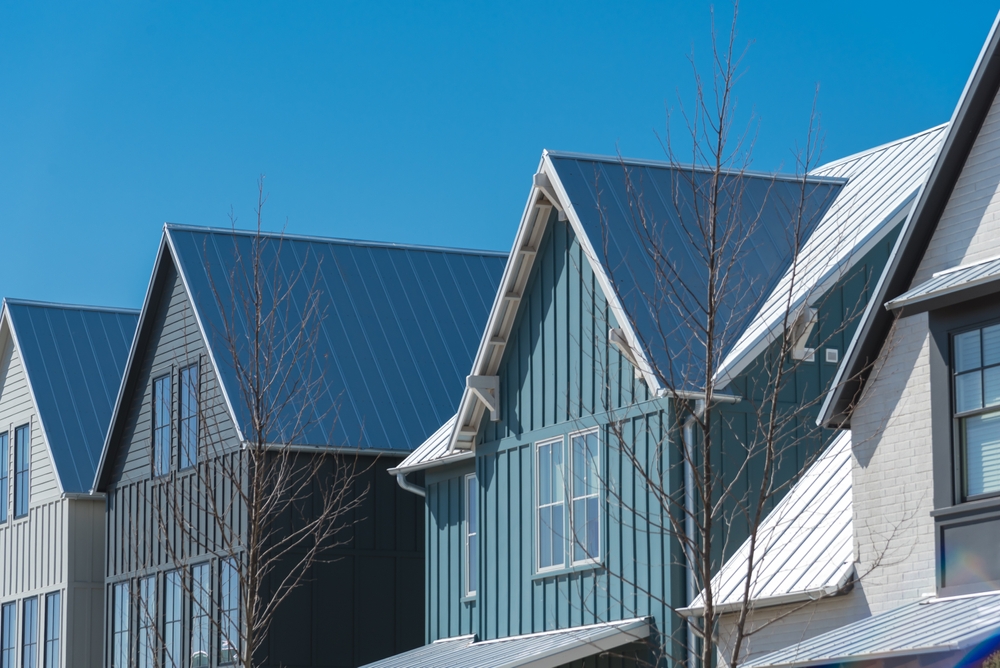
The Impact of Climate on Metal Siding Durability
July 5, 2024 2:23 pm Leave your thoughtsMetal siding is a popular choice for many homeowners due to its durability, low maintenance requirements, and aesthetic appeal. However, its longevity and performance can vary significantly depending on the climate in which it is installed. Understanding how different climates affect metal siding can help homeowners make informed decisions about their exterior cladding options.
Factors Affecting Metal Siding Durability
1. Temperature Fluctuations
One of the primary factors influencing the durability of metal siding is temperature fluctuation. In regions with extreme temperature variations between seasons, such as hot summers and cold winters, metal siding can expand and contract significantly. This thermal movement may lead to stress on the siding panels, potentially causing warping or buckling over time. Proper installation techniques, including allowance for expansion gaps and using compatible fasteners, can mitigate these issues.
2. Humidity and Moisture Levels
Humidity levels and moisture exposure also play a critical role in determining the lifespan of metal siding. High humidity environments can accelerate corrosion and rust formation, particularly in areas with poor ventilation or where moisture can accumulate. Coastal regions, for instance, experience higher humidity levels due to proximity to the sea, making regular maintenance and protective coatings essential to prevent corrosion and maintain the appearance of the siding.
3. Precipitation Patterns
The amount and frequency of precipitation in a given climate impact how often metal siding is exposed to water. Heavy rain or snowfall can lead to prolonged wet conditions, increasing the likelihood of moisture penetration into seams or joints in the siding panels. Areas prone to frequent rainstorms or snow accumulation may benefit from additional weatherproofing measures, such as applying waterproof barriers or choosing siding profiles that minimize water infiltration.
Regional Climate Considerations
1. Hot and Dry Climates
In hot and dry climates, such as desert regions, metal siding is exposed to intense sunlight and high temperatures during the day, followed by rapid cooling at night. These temperature extremes can cause metal panels to expand and contract, potentially compromising their structural integrity over time. Additionally, UV exposure can lead to fading or discoloration of paint finishes, necessitating periodic repainting or choosing siding materials with enhanced UV resistance.
2. Cold and Snowy Climates
In cold climates with heavy snowfall, metal siding must withstand not only freezing temperatures but also the weight of accumulated snow and ice. Proper insulation and thermal barriers are crucial to prevent heat loss and minimize the risk of ice dams forming along the eaves. Additionally, selecting metal siding with a high resistance to impact and denting ensures durability against hailstorms or falling debris during winter months.
3. Coastal and Marine Environments
Coastal regions are characterized by high levels of salt spray and airborne moisture, posing a significant challenge to metal siding due to the corrosive effects of saltwater. Stainless steel or aluminum siding with corrosion-resistant coatings or anodized finishes are recommended for coastal homes to withstand saltwater exposure and maintain their appearance over time. Regular rinsing and cleaning of siding surfaces can also help remove salt deposits and prevent accelerated corrosion.
Maintenance Strategies for Longevity
Maintaining metal siding’s durability in varying climates requires proactive care and maintenance practices:
- Regular Inspection: Periodically inspecting siding panels for signs of corrosion, rust spots, or paint damage allows for timely repairs or recoating.
- Cleaning and Washing: Removing dirt, debris, and salt deposits from siding surfaces prevents buildup that can trap moisture and accelerate corrosion.
- Applying Protective Coatings: Applying weather-resistant coatings or paint finishes designed for metal siding enhances durability and UV protection, extending the lifespan of the panels.
- Ensuring Proper Installation: Following manufacturer guidelines and hiring experienced contractors for installation ensures that siding panels are properly sealed and fastened to withstand climate-related stressors.
Conclusion
The durability of metal siding is significantly influenced by the climate in which it is installed. By considering factors such as temperature fluctuations, humidity levels, precipitation patterns, and regional climate conditions, homeowners can make informed decisions about selecting and maintaining metal siding that meets their aesthetic preferences and performance expectations. Regular maintenance and proactive care are essential to maximize the lifespan and structural integrity of metal siding, ensuring long-term protection and value for residential properties in diverse climates.
Need a Metal Roofing Supplier in Anchorage, AK?
Our team here at Superior Products, Inc. has supplied thousands of commercial and residential metal roofing and siding projects throughout Alaska and areas in the lower 48 states. We provide concealed or exposed fasteners, metal insulated roof and wall panels, metal soffits, fascia panels and full wrap flashes, snow control products, metal shingles, and much much more! Call us today for immediate service.
Categorised in: Residential Metal Siding
This post was written by admin

